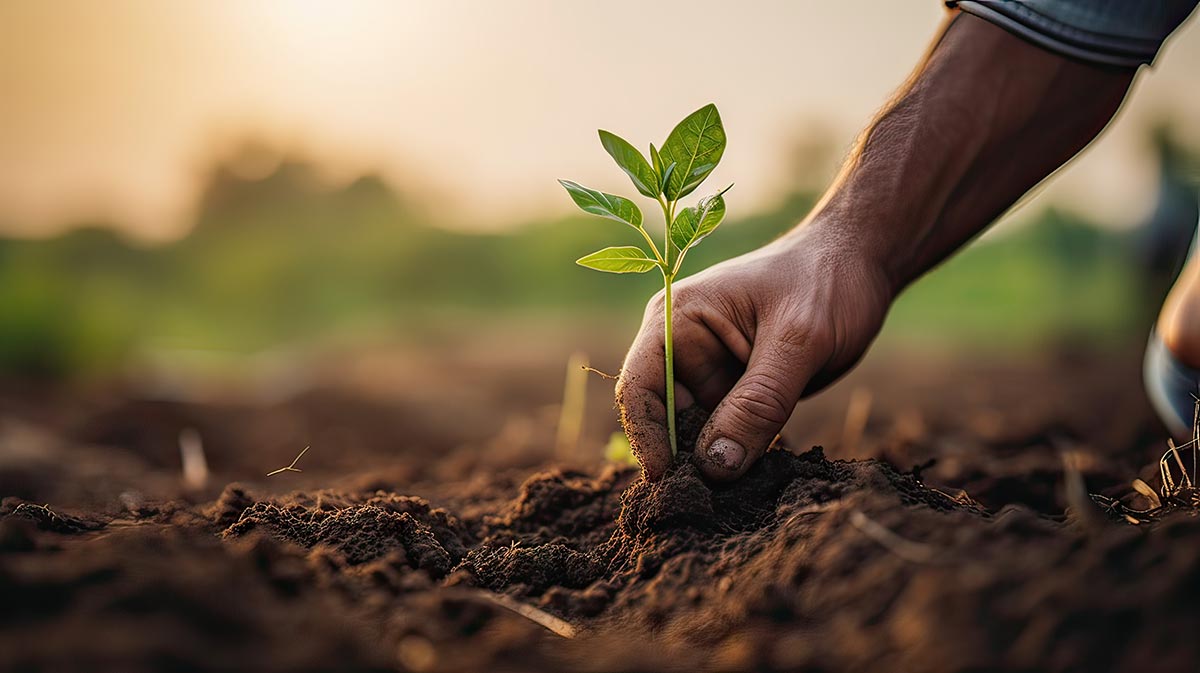When people find out that I’m both a biologist and someone who has spent plenty of time behind a chainsaw, in a garden, or knee-deep in compost, they often ask how those worlds connect. At first glance, science and farming might seem like different skill sets. But in reality, they share the same foundation: systems thinking.
Systems thinking is simply a way of seeing the big picture—understanding how individual parts fit together, influence one another, and change over time. In the lab, that might mean examining how fungi interact with trees in a forest ecosystem. On a farm, it might mean recognizing how soil health, water use, pests, and crop rotation affect your harvest. Over the years, I’ve learned that the lessons from biology and farming don’t just apply to science—they apply to leadership, problem-solving, and even how we live our lives.
Lesson One: Nothing Exists in Isolation
In biology, nothing lives in a vacuum. Plants depend on microbes, pollinators, and weather patterns. Predators keep prey populations in balance. And yes, fungi quietly recycle nutrients from dead wood back into the soil. If you ignore any of these relationships, you miss the bigger story.
Farming taught me this lesson in a hands-on way. You can’t just plant a seed and walk away. If you neglect the soil, the plant will struggle. If you don’t think about pests or pollination, you might get beautiful leaves but no fruit. Everything is connected—soil health, water management, biodiversity, human labor, and even the neighbor’s beehive down the road.
The same is true in organizations. A college, for example, isn’t just classrooms and students—it’s faculty, staff, community partnerships, funding systems, and cultural values all working together. If one part falters, the whole system feels it.
Lesson Two: Feedback Loops Matter
One of the first things you learn in ecology is the concept of feedback loops. In a forest, more shade can reduce undergrowth, which changes animal habitats, which then changes seed dispersal patterns, which affects the forest’s future composition. The system constantly adjusts to itself.
On the farm, feedback loops are everywhere. Plant too early in the season and you might get a late frost that sets you back weeks. Over-water one crop and you might cause root rot that affects the surrounding plants. You quickly learn that every action creates a ripple effect, sometimes in ways you can’t predict.
This applies just as much to leadership. Change one policy in an institution, and it might impact budgets, morale, and community perception in unexpected ways. Systems thinking forces you to anticipate these loops, monitor results, and adapt—just as you would in managing a farm or running a research project.
Lesson Three: Diversity Strengthens the System
In nature, monocultures are fragile. A single pest, disease, or weather event can wipe them out. That’s why diverse ecosystems are more resilient—they have redundancy, variety, and multiple pathways for energy to flow.
Farming reinforced this truth for me. I learned quickly that planting only one kind of crop might make the harvest easier, but it also made me more vulnerable. A diversified field, much like a diverse ecosystem, could better withstand unpredictable challenges.Knowing this is textbook stuff, but, practicing it is where you figure it out situationally.
In an organization or community, diversity works the same way. People with different backgrounds, skills, and perspectives bring more solutions to the table. They notice different risks. They create richer ideas. A healthy system—whether biological, agricultural, or institutional—depends on variety.
Lesson Four: Patience is Part of the Process
Working in the lab taught me to slow down. Experiments take time. Data collection takes time. Sometimes, the most valuable results come from patiently observing instead of rushing toward a conclusion.
Growing things taught me patience in a much messier way. You can’t force plants to grow faster by staring at them. You can’t rush compost. If you pull up carrots too soon, you get stunted roots. If you harvest tomatoes before they’re ready, you miss their full flavor. Systems have their own pace, and fighting that rhythm rarely ends well.
In leadership, patience means recognizing that real change takes seasons, not minutes. You can plant ideas, nurture them, and create the right conditions—but you can’t expect overnight transformation.
Lesson Five: Renewal is Possible
One of the most hopeful lessons from both biology and plant cultivation is that renewal is built into the system. Forests recover after fires. Soil can be rebuilt after erosion. A neglected garden can come back to life with care and attention.
This doesn’t mean recovery is easy or guaranteed—it takes work, resources, and time. But the potential is always there. In community colleges, I’ve seen departments bounce back after setbacks, programs reinvent themselves, and students who once struggled go on to succeed in ways they never imagined. That potential for renewal is what keeps me motivated.
Bringing It All Together
When I look at the systems I’ve worked in—whether it’s a patch of woodland, a field of crops, or a campus community—I see the same patterns: interconnected parts, feedback loops, diversity, patience, and renewal. These patterns are universal because they’re grounded in how life itself works.
Farming and biology didn’t just give me technical skills; they taught me how to think. They taught me that quick fixes rarely solve complex problems, that every part of a system matters, and that resilience comes from understanding the whole picture.
In a time when so many challenges—climate change, education reform, economic uncertainty—are interconnected, we need more systems thinking, not less. We need leaders who can see the forest and the trees, the soil and the harvest, the short-term and the long-term.
So whether I’m studying fungi in a rotting log, planting rows of beans, watering blueberry bushes, or sitting in a meeting about institutional planning, I’m really doing the same thing: looking for the connections, anticipating the feedback, valuing diversity, trusting the process, and believing in renewal. From soil to solutions, it’s all part of the same story.
